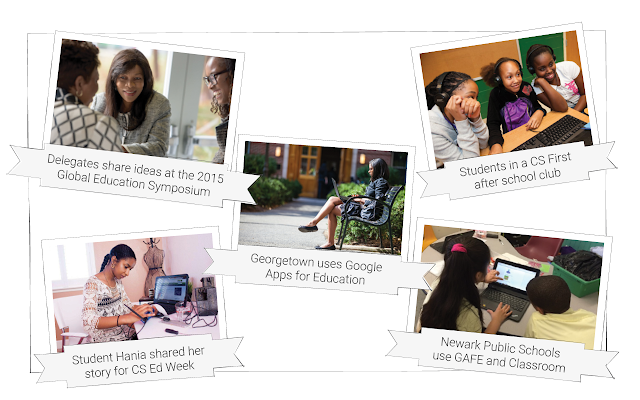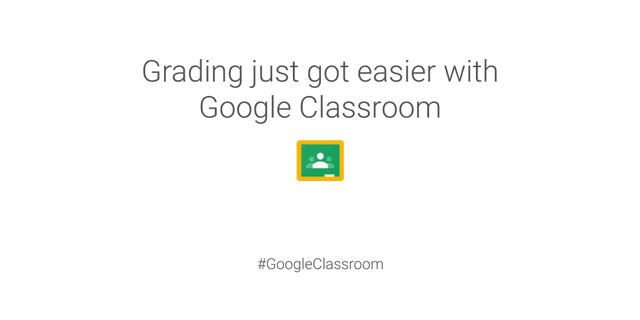Editor's note: To celebrate Earth Day, we’re sharing how schools are using technology to be more environmentally friendly.
It’s a tradition in many parts of the world to plant a tree on April 22nd in honor of Earth Day, but some schools are going even further by reducing their use of paper and going digital. Here’s how environmentalism is coming to life in the classroom.
Going paperless
When Chagrin Falls Exempted Village Schools in a suburb of Cleveland, Ohio, introduced Google for Education tools in 2014, they started down the path to becoming paperless. Today, students access handouts, work on assignments and turn them in using Google Classroom, decreasing the amount of printed pages by 100,000 sheets per year and reducing printing by 20 percent. This spring, teachers told Mike Daugherty, director of technology and information systems at Chagrin Schools, they haven’t been to the copier since the start of the school year.“The traditional model of printing a worksheet for every student is wasteful and outdated,” says Daugherty. “Now printing is an afterthought for most classes.”
Similarly, with more than 900 students and 40 teachers, Westlake Charter Schools in Sacramento, California, used a lot of paper in the classroom and for administrative tasks. Since introducing Google for Education tools a year ago, the schools have reduced their paper use by a third, saving them thousands of dollars. For example, the board of directors stopped printing dozens of paper meeting agendas and policies, and now share Google Docs on a password-protected website. “Before, our schools went through 120 cases of paper a year on average — that’s over a million pieces of paper,” says John Eick, executive director at Westlake Charter Schools.
 |
| Students at Westlake Charter Schools use Chromebooks to access resources and turn in assignments, reducing their paper consumption. |
Turning paper-based books into digital books
Tennessee’s Tullahoma City Schools took a creative earth-friendly approach by integrating interactive content into the classroom: they created digital textbooks using Google Docs. These open-source textbooks are accessible on any device and can be edited to include timely information, reducing the number of paper textbooks purchased. “Since our district is 1:1 in grades 3 through 12, we have the capability to deliver digital content electronically. However, those districts who are not 1:1 can still use open-source textbooks since hard copies can be generated and printed for students’ use at a fraction of the cost in comparison to paying a publisher $80 for a textbook,” says Dan Lawson, superintendent at Tullahoma City Schools.The schools have transitioned to digital social studies and math content, and plan to have digital textbooks for all core subjects in the 2017-2018 school year. They’re also helping other schools create digital textbooks and take a green approach when introducing new technology.
 |
| Tullahoma City Schools is reducing the number of paper textbooks in the classroom by creating digital textbooks. |
Building awareness about recycling
Many green programs are spearheaded by schools and teachers, but at Bronx Community Charter School in New York, fifth graders Amma Nkatiaah and Julia Malyzsko led the environmental initiative. Nkatiaah says, “We wanted our classmates to realize how much waste they’re producing.”The students emailed Google asking them to bring the Expeditions Pioneer Program, a virtual reality program in which students use Android phones and Google Cardboard to go on virtual field trips, to their school and teach their peers the importance of being environmentally friendly. Their wish was granted: the Google for Education team and our partner Subaru brought Expeditions to Bronx Community Charter School, and fifth graders went on virtual field trips to the local sanitation facility and recycling plant to see where their waste goes. Students were immediately inspired to start identifying ways to cut back on their waste.
“Since we started this big idea, there can be many other students that can follow in our footsteps, or many other people try and maybe get different ideas,” Malyzsko says. “I think it’s really amazing that we get to take the first step and be the root of all of this.”
 |
| Bronx Community Charter School students going on an Expedition to a local recycling plant to learn more about being environmentally friendly |
These schools are pushing the boundaries on how they use educational technology by adopting a paperless mindset and finding 21st century solutions to use less paper. Here are four ways to make your school more green:
- Replace paper-based resources with digital ones
- Choose technology with low-energy consumption and long battery life
- Encourage students to find new ways to introduce digital tools
- Start a classroom recycling program for paper and used electronics
















